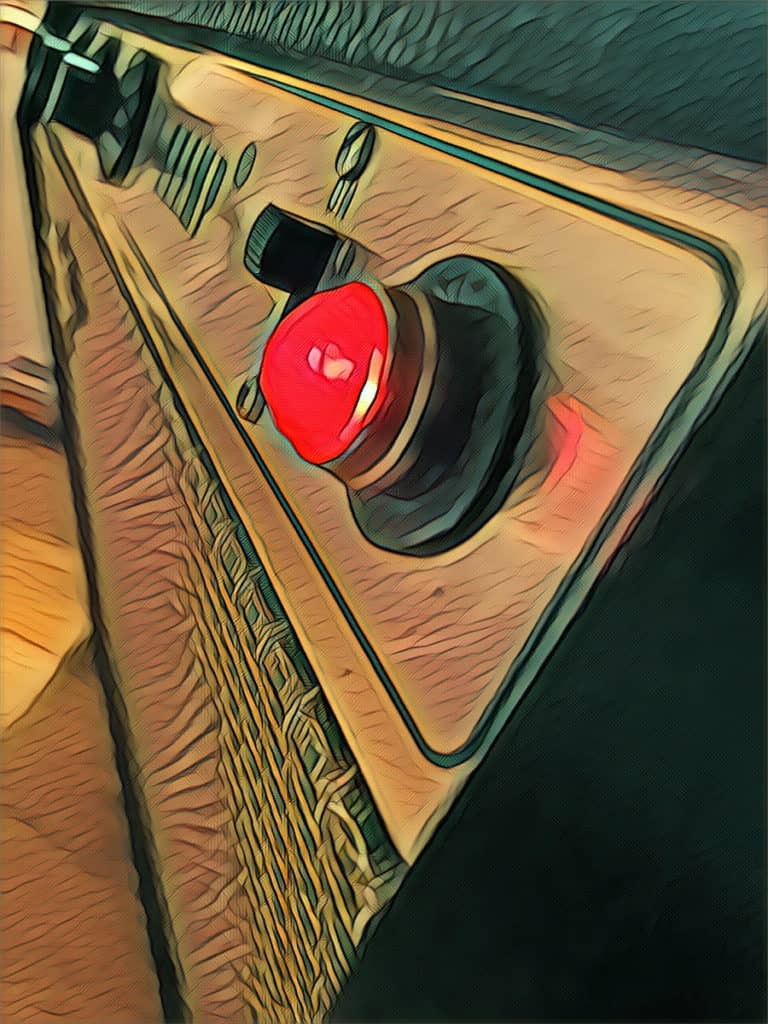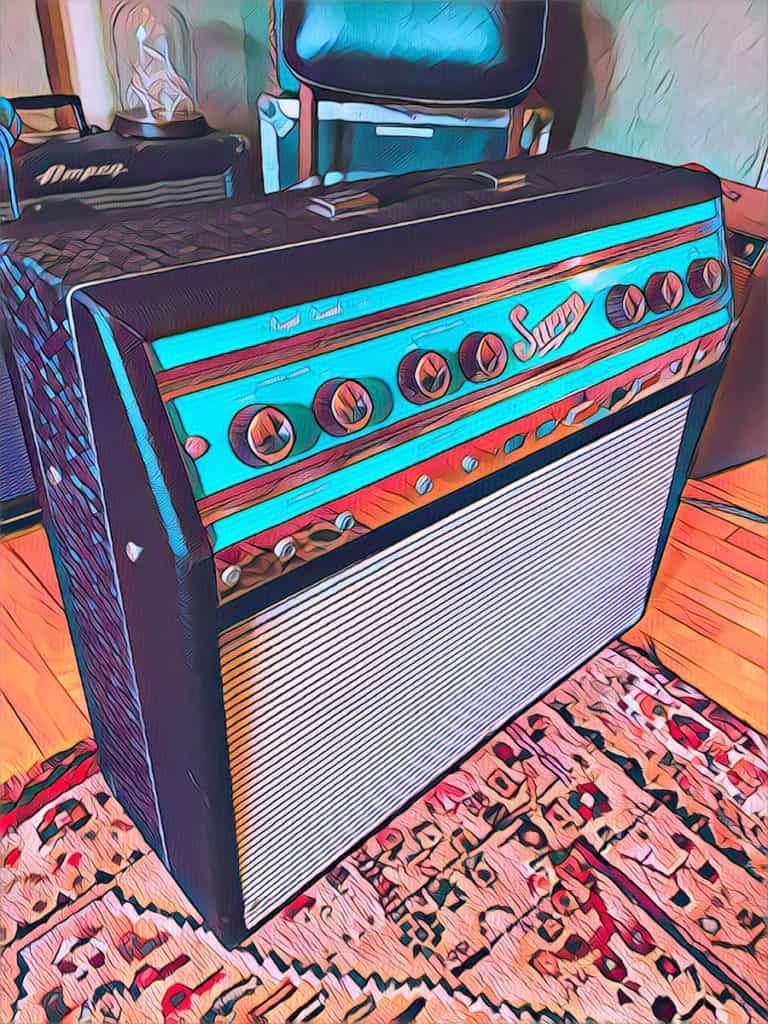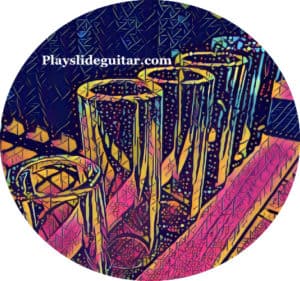As an Amazon Associate Playslideguitar.com earns from qualifying purchases. This page contains affiliate links.
When playing slide guitar, it can be easy to focus on your technique more than the actual sound coming out of your amp. This is great for developing your playing, however there are ways that you can easily improve your tone simply by tweaking some settings on your amp.
Slide guitar has a distinct timbre, and by understanding the nature of its tonality you can utilize your amp to accentuate its sound. Most guitar amps that you use for slide guitar have EQ, reverb, and other controls that are easy to adjust and tailor to your playing.
Here are some of the best ways to set your amp for slide guitar, which can be great for shaping your tone…
Add More Presence
The actual sound of the slide against the strings is perhaps the most fundamental part of the slide guitar’s sound. Combined with sustain and vibrato, the slide has a way of voicing notes that is different than using your bare fingers like on regular guitar.
When you use the slide higher up on the neck of the guitar (for higher pitched notes), not only can the notes project more, they can have more presence to them. By bringing out this frequency range on your amp, you can emphasize the sound of the slide making it have more transparency and definition within the music.

If your amp has a presence control on it, try setting it around 6 or 7 (with 10 being the max) to add more definition to your tone. This can be a great way to bring out more articulation of the notes you play, and add clarity to them.
Not all amps have a presence knob, but if they do it’s usually to the right of the high EQ control since presence is an even higher frequency range. If your amp doesn’t have a presence setting, you can adjust this frequency range by using an EQ pedal like Boss’s EQ-200 (click to view it on Amazon).
Usually frequencies around 6,000 Hz and higher can bring out more presence of an instrument, and boosting these slightly can be a great way to further define your slide guitar tone.
Cut Out Lower Mids
Sometimes the sound of a guitar can sound muddy in the mix of instruments, especially if there’s a lot going on sonically in the lower mid frequencies of a song.
Often the bass guitar, drums, and keyboards move in and out of this frequency range, which can make it harder for your slide guitar to cut through here. Also, this frequency range can often sound “boomy” and muddy naturally, so it can be a good idea to control this area with your amp’s settings.
By cutting some of these frequencies, you’ll actually enhance your slide guitar’s tone by making it sound warmer and brighter at the same time. Turn the amp’s low settings down slightly, and if this gives your slide guitar more clarity without sounding too thin, then you’ve hit the sweet spot.
Also, sometimes the mid settings on your amp will be in this range, so cutting them slightly can produce a similar effect. However, keep in mind that the muddiness often lives in the 350-450 Hz frequency range, and not every amp will have a knob that will specifically control this. This is why it may take some experimenting on your low and mid settings to find the right mixture of settings for altering this range.
Alternatively, some amps will have a low-mid setting (or even a shift knob) that allows you to control this range of frequencies. Try cutting out just enough of these frequencies that your lower notes have a punch and warmth to them, where they may have sounded muddy before.
Emphasize the Reverb
Reverb is a great way to sweeten the sound of your slide guitar, and give it more dimension within the music. Although reverb preferences often come down to playing styles and the type of music, adding a little bit more than you usually use is a great way to enhance the tail-end of notes that you sustain with the slide.
This can be beneficial for accentuating your vibrato, which is one of the most diverse expressions of slide guitar. By having a rich sounding reverb, you can add more texture to your notes and make them sound thick and creamy within a song.
Try setting your amp’s reverb control to about 4 or 5 (out of 10), and then play some notes with the slide while adding vibrato as they ring out. Listen for the vibrato’s lilting sound within the sustained note and see if the reverb is reflecting this pattern. If so, then you’ve probably gotten the reverb dialed in to supplement your sound.
Be careful not to overdo it however, as too much reverb can make your slide guitar sound distant and lost in the music. Find a nice balance between texture and decay: you want the reverb to sound thick, but not like you’re lost in a cave.
Some older amps may not have reverb built into them, in which case a reverb pedal can be a good substitute. Check out TC Electronic’s Hall of Fame 2 reverb pedal (link to Amazon), which has a great sounding reverb tone and plenty of settings for dialing it in to your preferences.
Pre Gain and Master Gain
A lot of an amp’s tone is inherent in the way the pre gain and master volume levels are set. These can often have a direct influence on each other, and play a large part in the tone you get when playing slide through an amp.
It is important to consider if your amp is a tube amplifier or a solid-state amplifier. Whenever you use a solid-state amp, be sure that the pre gain is at a lower level than the master gain. If it isn’t your amp will distort in a way that doesn’t sound harmonically pleasing to the ears, whereas tube amp distortion does.
Ensuring that the master gain is higher than the pre-gain on your solid-state amp will produce a clearer and more crisp tone, which can be great for slide guitar.

When using a tube amp, oftentimes you can set the pre-gain higher than the master volume to produce a distortion that is harmonically rich. If you set it near the same level as the master (about equal to or just above it), you can make the harmonic distortion of the amp have a dynamic aspect to it.
This way when you play louder or more energetically, the amp will naturally distort in reaction to your playing levels, which can sound great for slide guitar.
When using a tube amp for slide guitar, try starting with the pregain set to about 3.5 and the master volume set to 3. Depending on the room size, the band’s volume, and the tone you’re getting, try adjusting from there to make the most of these settings.
For solid-state amps, I like to start with the pre gain one numerical value below the master’s gain level. For instance, if the pre is set to 3, I’ll have the master set to 4.
Add A Touch of Mids: The 2kHz Range
Guitar in general has a lot going on sonically in the middle frequency range of music, and having a keen ear for this area can go a long way for slide guitar. Most amps will have a mid control, and setting this appropriately can play a large role in your tone.
The mids will often naturally sound full on your slide guitar, so it can be a good idea to set your amp’s mids to a neutral setting to begin with. However, if your slide sound seems like it’s missing some bite to it, then try boosting the mids a little bit so that your guitar has an edgier tone that is still warm and balanced.
If you boost the mids and your slide guitar ends up sounding too shrill, then lower them and find a more balanced tone. Sometimes finding a more specific middle frequency to adjust can go a long ways, and slightly boosting 2kHz is a great way to make the slide sound more exciting, which can help it cut through the mix.
Again, if your amp has a shift or frequency knob, then try slightly boosting at this frequency range. On the other hand, if your slide guitar ever sounds piercing or shrill in the mids, then try cutting a little bit from the 4KHz range.
Conclusion
Adjusting the settings on your amp can be a great way to shape your slide guitar’s tone, and is often easy to do. Most amps will have various settings that you can quickly adjust, and you can also use an effects pedal like Boss’s EQ-200 Graphic Equalizer (link to Amazon) for more precise control.
Whether your playing slide guitar in the studio, at home, or on stage, understanding how to adjust your amp’s settings can be beneficial to your overall sound.
Check out the page below for more info on amps for slide guitar…
